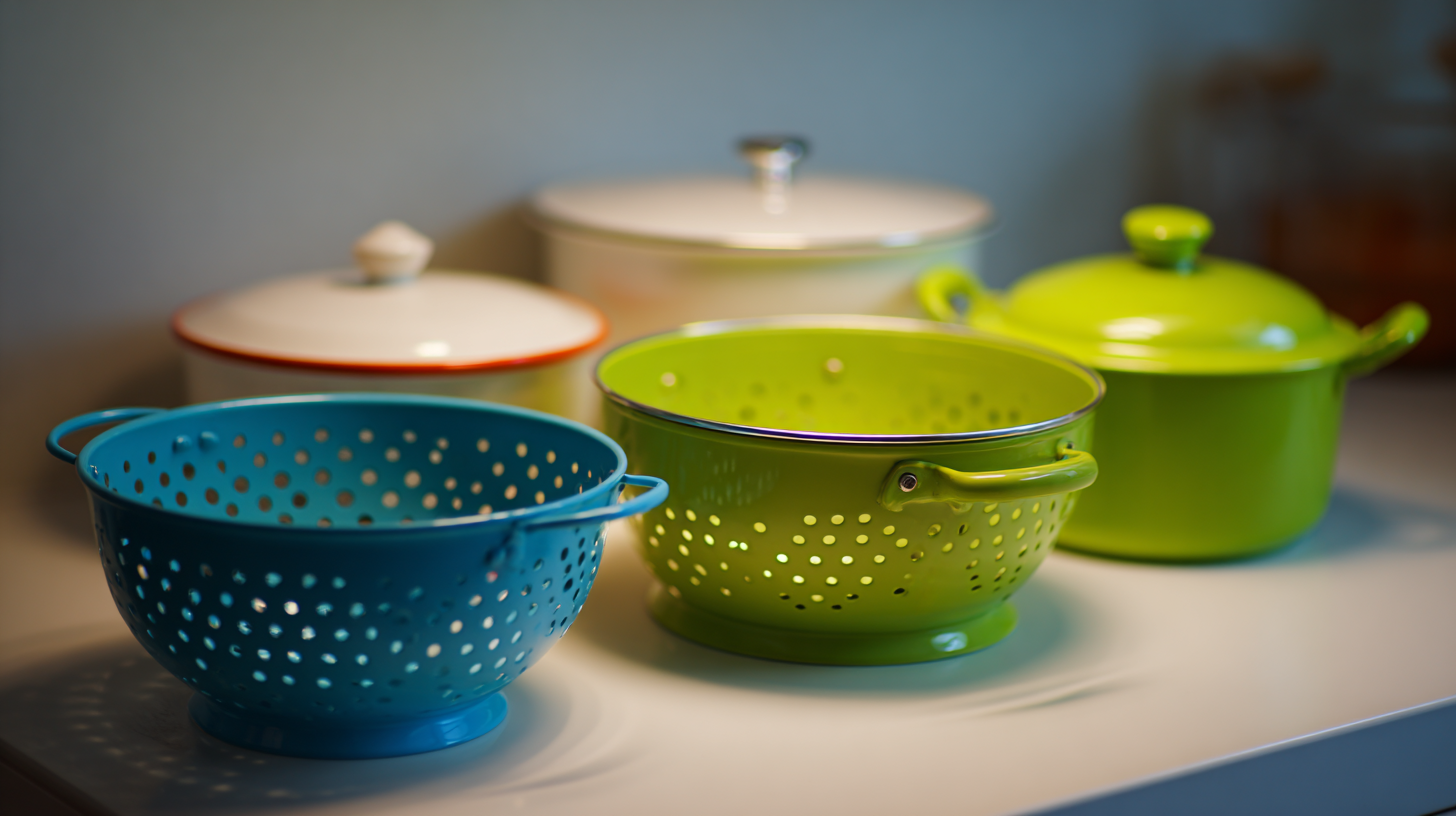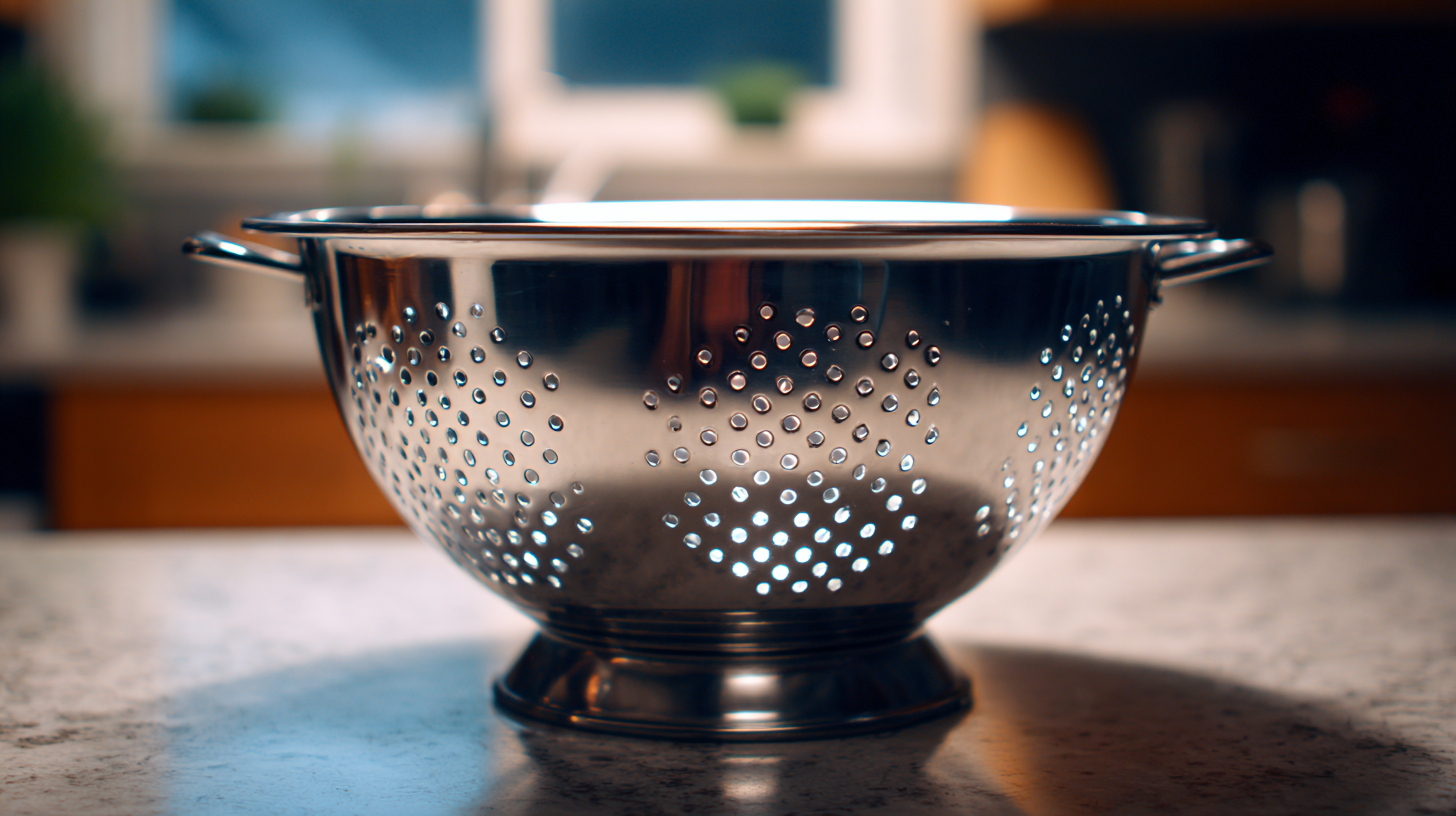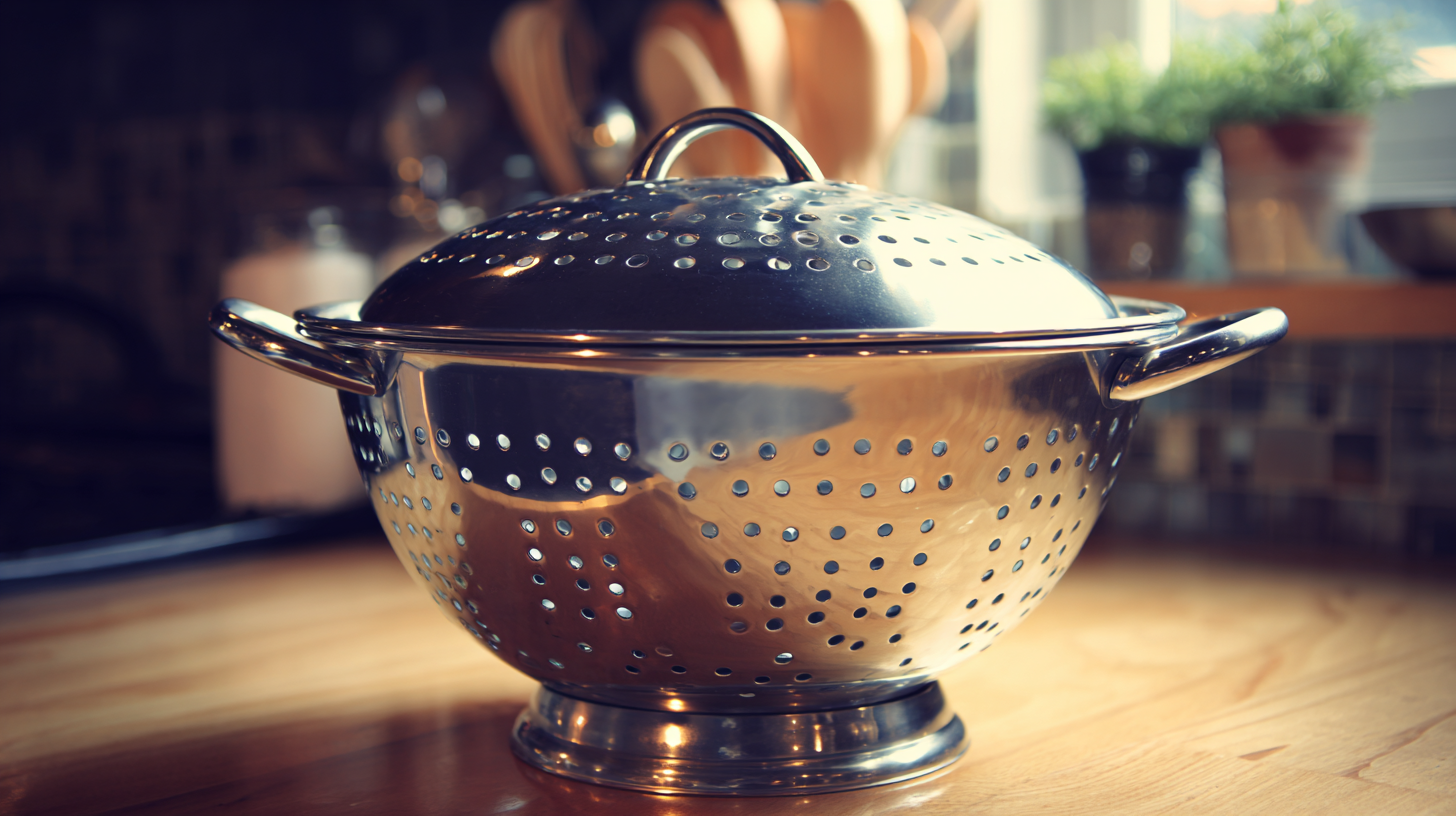Welcome to this website!

In today's culinary landscape, selecting the right kitchen tools can significantly impact food preparation and overall cooking efficiency. Among these essential tools, the kitchen colander plays a crucial role in various culinary tasks, from draining pasta to rinsing fresh produce. According to a report by the Specialty Food Association, the demand for high-quality kitchenware, including colanders, has surged by 20% over the past five years, reflecting a growing interest in home cooking and gourmet techniques. However, not all kitchen colanders are created equal, with common issues such as durability, ease of cleaning, and design functionality often leaving consumers frustrated.

This blog aims to delve into the industry standards surrounding kitchen colanders, highlight prevalent challenges, and provide guidance to ensure that both novice and seasoned cooks can make informed choices in their kitchen tool selection.
 The evolution of kitchen colanders has seen significant transformations in design and functionality, catering to the ever-changing needs of modern home cooks. Traditionally simple and utilitarian, colanders today come in a variety of materials, including stainless steel, silicone, and even bamboo. These innovative designs not only enhance aesthetic appeal but also improve performance in the kitchen, allowing for better drainage and ease of use. As trends shift towards multifunctional kitchen tools, colanders have incorporated features like heat resistance and collapsibility, making them essential for space-saving in smaller kitchens.
The evolution of kitchen colanders has seen significant transformations in design and functionality, catering to the ever-changing needs of modern home cooks. Traditionally simple and utilitarian, colanders today come in a variety of materials, including stainless steel, silicone, and even bamboo. These innovative designs not only enhance aesthetic appeal but also improve performance in the kitchen, allowing for better drainage and ease of use. As trends shift towards multifunctional kitchen tools, colanders have incorporated features like heat resistance and collapsibility, making them essential for space-saving in smaller kitchens.
When choosing a colander, consider what will best suit your cooking needs. A tip for those who frequently cook pasta is to select a colander with larger holes to allow for quick drainage, while still retaining the shape and texture of the noodles. For those who frequently rinse fruits and vegetables, a fine-mesh colander is ideal to prevent smaller items from slipping through.
Moreover, keep an eye on emerging trends such as eco-friendly materials and ergonomic designs that provide comfort during prolonged use. These modern innovations not only enhance the cooking experience but also align with today's focus on sustainability and practicality in kitchenware.
When considering kitchen colanders, material and design innovations play a crucial role in enhancing their functionality and user experience. Traditionally made from stainless steel or plastic, modern colanders have evolved to incorporate materials such as silicone and reinforced composites, offering greater flexibility and durability. These new materials not only provide resistance to rust and staining but also ensure that the colanders can withstand high temperatures, which is essential for draining hot pasta or vegetables.
Additionally, innovative designs are changing the way colanders are utilized in the kitchen. Features like collapsible frames for easy storage, integrated handles for better grip, and smart drainage systems that minimize spills offer convenience previously unavailable. Some designs even prioritize ergonomics, ensuring that these kitchen tools are comfortable to use over extended periods. As the culinary world continues to blend functionality with aesthetic appeal, the evolution of colander designs reflects broader trends in kitchen innovation, demonstrating how industry standards are adapting to meet the evolving needs of home cooks.
When it comes to choosing the best kitchen colanders, consumers often face common issues that can affect their overall satisfaction. One primary concern is the size and capacity of the colander. Many shoppers find themselves torn between a smaller, easily manageable colander and a larger option that can handle a family-sized batch of pasta or vegetables. Additionally, the material of the colander plays a significant role in its functionality and durability. Stainless steel options are well-regarded for their sturdiness, while plastic models may offer more versatility and lightweight handling.

Another issue consumers encounter is the colander's design and ease of use. Features such as handle ergonomics, spout placements for easy pouring, and stability while draining can make a vast difference in user experience. Many shoppers overlook these design elements, only to realize after purchase that their colander is unwieldy or difficult to use. As such, buyers should prioritize these factors along with their specific needs, ensuring that their colander is both practical and convenient for their cooking habits. By being mindful of these common issues, consumers can make more informed choices when selecting the ideal kitchen colander for their home.
When it comes to kitchen tools, particularly colanders, understanding industry standards for quality and safety is essential. High-quality colanders are not only designed to perform efficiently, but they should also meet specific guidelines to ensure they are safe for food contact. The FDA regulates materials used in kitchen products, ensuring that items like plastic colanders are made from BPA-free and non-toxic materials. This is crucial for consumer safety, as harmful substances can leach into food during use.
Moreover, durability is another critical factor. Quality colanders should withstand everyday use without degrading over time. Many manufacturers adhere to standards set by organizations like ASTM International, which provides guidelines on material strength and performance. For instance, stainless steel colanders should be resistant to rust and corrosion, ensuring they maintain their integrity and safety over time. By choosing colanders that comply with these industry standards, consumers can make informed decisions, ensuring their kitchen tools are reliable and safe for their culinary adventures.
| Colander Material | Size (in inches) | Weight (lbs) | Heat Resistance (°F) | Dishwasher Safe |
|---|---|---|---|---|
| Stainless Steel | 8 | 1.2 | 450 | Yes |
| Plastic | 7 | 0.8 | 200 | Yes |
| Silicone | 9 | 1.0 | 500 | Yes |
| Bamboo | 10 | 1.5 | N/A | No |
As we move towards a more sustainable future, the kitchen colander is evolving to meet both functionality and eco-friendliness. Modern manufacturers are increasingly using recycled materials and sustainable practices in the production of colanders, reducing the environmental impact. Consumers can now find options made from bamboo, stainless steel, and even biodegradable plastics. These materials not only enhance the aesthetic appeal of the kitchen but also ensure durability, making them a worthwhile investment for the environmentally conscious cook.
When selecting a colander, consider its versatility in the kitchen. A solid colander should not just strain pasta but also drain vegetables, wash fruits, and serve as a striking presentation piece at gatherings. Look for features such as heat resistance and ergonomic designs that make it easier to handle when filled.
Tip: Always opt for a colander with a sturdy base and non-slip handles for better stability while rinsing. You might also want to choose one with multiple size options or a collapsible design to save space in your kitchen. By prioritizing both sustainability and functionality, you can elevate your cooking experience without compromising your commitment to the planet.
